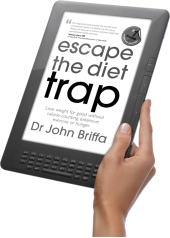A study published today links migraine and colic [1]. In this research, children and adolescents aged 6-18 who suffered from migraine were much more likely to have had colic as infants compared to children without migraine (about 73 per cent versus 26 per cent). Statistics like these suggest that migraine and colic may have a common root.
A quote from authors of the paper found here states:
“The link between infantile colic and migraine could be based on a pathogenetic mechanism common to migraine without aura and also migraine with aura. We found that among migraine characteristics, only pulsatile pain was more frequent in children with a history of infantile colic than among children with migraine but without infantile colic. Infants with colic might experience a similar sensitization of the perivascular nerve terminals in the gut, although this hypothesis needs to be tested.”
I suggest, though, that the likely mechanisms that might tie migraine and colic together is food.
Leaving children aside for a moment, I find a very common cause of intestinal discomfort is ‘food sensitivity’. Here, it seems specific foodstuffs have the capacity to initiate immune-reactions and inflammation in the intestinal wall, causing discomfort and perhaps other symptoms (e.g. bloating) too. Any food, in theory, might cause problems, but certain foods do seem to be frequent offenders. In practice, I find the very worst offender to be wheat. Dairy products (especially milk) are other likely suspects in my experience.
The idea that migraine might be triggered by food is quite well established. I remember learning at medical school that the common triggers are red wine, coffee, chocolate (especially dark chocolate) and citrus fruits. There is no doubt in my mind that these foods can indeed trigger migraines. However, many years ago I came aware of some research which highlighted the potential role of perhaps more commonly-eaten foods (including wheat and milk) in migraine [2].
In this study, individuals with migraine were put on an exclusion diet, and then tested with foods to see which (if any) appeared to provoke a migraine attack. In this sample of people, the most common offender turns out to be wheat, which appeared to cause problems in 78 per cent of people tested. Other problems foods included orange (65%), eggs (45%), tea and coffee (40% each), chocolate and milk (37%) each), beef (35%), and corn (33%), cane sugar (33%), and yeast (33%).
So, is there any evidence colic can be caused by food sensitivity? Yes, is the answer, and one common potential problem here seems to be cow’s milk-based formula [3,4]. There is also some thought that offending foods can make their way into a child’s gut via breast milk. My experience is that breast-fed infants with colic often improve when cow’s milk is eliminated from the mother’s diet. There is some evidence which supports this approach [5]. While cow’s milk is commonly implicated in colic, it’s not the only offender. One study showed that other foods in the mother’s diet which commonly upset breast-fed children include cabbage, broccoli, cauliflower, onion and chocolate [6].
The bottom line is that both migraine and colic can be caused by food sensitivity. Getting to the root of the problem can be tricky, sometimes, because this is an individual affair and no test is foolproof. However, my experience tells me that elimination of cow’s milk and wheat from the diet is very often all it takes to see a dramatic improvement in these conditions, as well as other problems associated with food sensitivity including asthma and eczema.
References:
1. Romanello S, et al. Association Between Childhood Migraine and History of Infantile Colic. JAMA epub 17 April 2013
2. Grant EC. Food allergies and migraine. Lancet. 1979;1(8123):966-9.
3. Lothe L, et al. Cow’s milk whey protein elicits symptoms of infantile colic in colicky formula-fed infants: A double-blind crossover study. Pediatr 1989;83(2):262-266.
4. Lothe L, et al. Cow’s milk as a cause of infantile colic: A double-blind study. Pediatr 1982;70(1):7-10.
5. Jakobsson I, et al. Cow’s milk as a cause of infantile colic in breast-fed infants. Lancet. 1978;2(8087):437-9.
6. Lust KD, et al. Maternal intake of cruciferous vegetables and other foods and colic symptoms in exclusively breast-fed infants. J Am Diet Assoc 1996;96:47-48[hr]
[box style=”rounded” border=”full”]
Dr John Briffa’s best-selling ESCAPE THE DIET TRAP – lose weight without calorie-counting, extensive exercise or hunger is available in the UK and US
“This magnificent book provides the scientific basis and practical solutions to liberate you from yo-yo dieting and allow you to achieve sustained weight loss and enhanced health with ease.”
William Davis MD – #1 New York Times bestselling author of Wheat Belly
To read some of the dozens of 5-star reviews for this book [button link=”http://www.drbriffa.com/amazon-reviews-for-escape-the-diet-trap/” color=”silver” text=”dark” window=”yes”]click here[/button]
To buy a paperback copy of the book from amazon.co.uk [button link=”http://www.amazon.co.uk/Escape-Diet-Trap-John-Briffa/dp/0007447760/ref=tmm_pap_title_0?ie=UTF8&qid=1324815918&sr=1-1″ color=”orange” window=”yes”]click here[/button]
To buy a kindle version of the book from amazon.co.uk [button link=”http://www.amazon.co.uk/Escape-the-Diet-Trap-ebook/dp/B005ODY0RW/ref=tmm_kin_title_0?ie=UTF8&qid=1324815918&sr=1-1″ color=”orange” window=”yes”]click here[/button]

To buy a print copy of the book from amazon.com [button link=”http://www.amazon.com/Escape-Diet-Trap-calorie-counting-extensive/dp/0957581602/” color=”orange” window=”yes”]click here[/button]

To buy the kindle version of the book from amazon.com [button link=”http://www.amazon.com/dp/B00BLQ40QM” color=”orange” window=”yes”]click here[/button]
[/box]